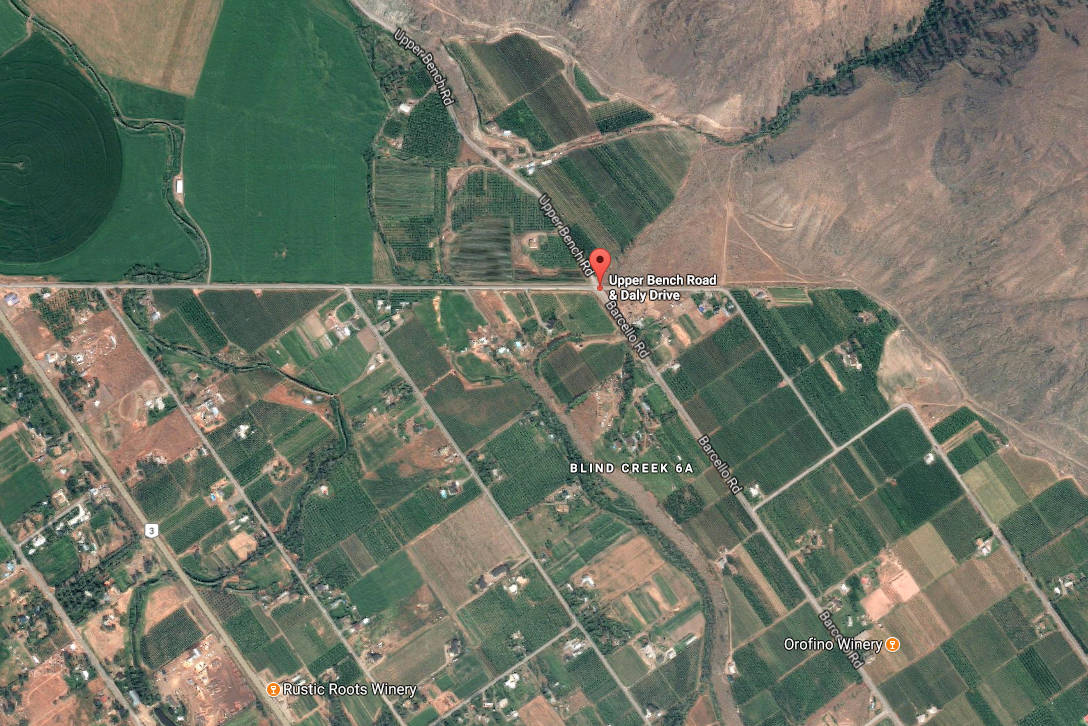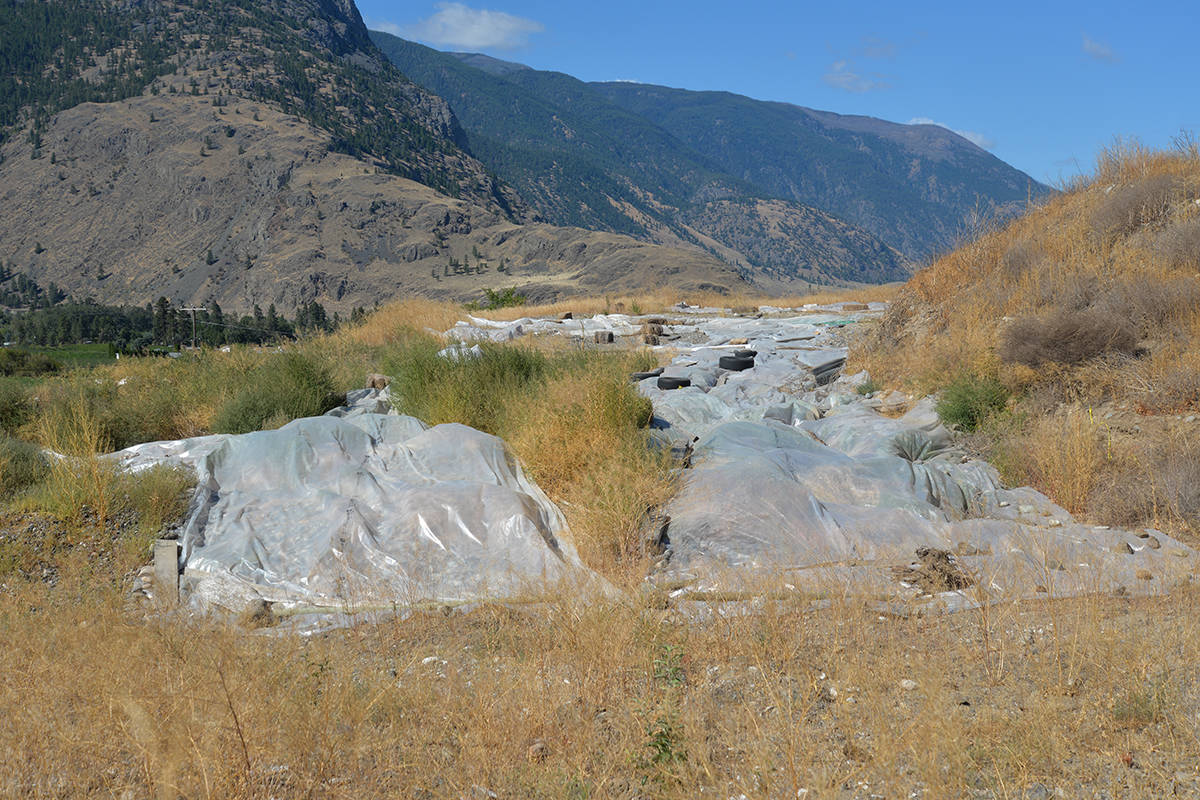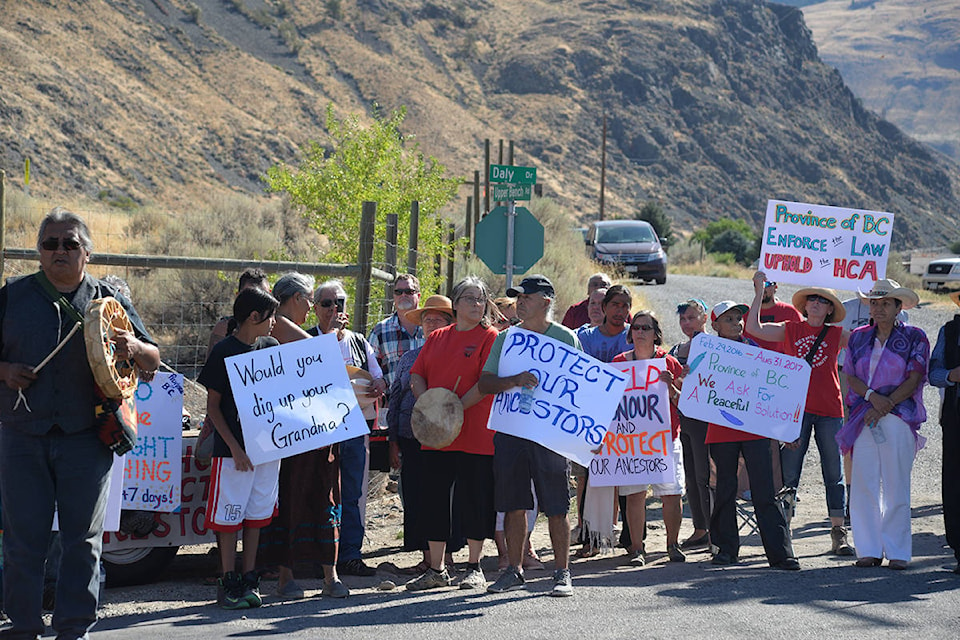For the first time in history, the B.C. government is using the court system to ensure remains of First Nations people are protected.
The announcement came Thursday from the Ministry of Forests, Lands, Natural Resource Operations and Rural Development regarding ancestral remains unearthed in an orchard near Keremeos.
The ancestral remains of at least seven people were unearthed near Keremeos on Feb., 29, 2016 when contractors started to flatten a small hill in an orchard so more apple trees could be planted.
Chief Keith Crow of the Lower Similkameen Indian Band, descendants of those unearthed, gave the news to more than 100 people including his members and those of the Okanagan Nation and from across the province at a Day of Action event held near the site Thursday morning.
Those at the rally held signs with slogans including, “No More Grave Desecration,” “Province of B.C. We Ask For a Peaceful Solution,” and “Would You Dig Up Your Grandma?”
Crow found out about the province’s plans during an interview with the CBC earlier Thursday morning.
“This is a positive. But we are still moving ahead with our plan. On Sept. 11 we are going to go on that site with or without a permit and start doing the archeological work and start recovering the rest of the bones that are there so we can rebury on that site,” he said.
The province plans to make an application to the courts under the Heritage Conservation Act, if approved it will force the property owners to restore the site and undertake the required conservation work. No timelines were given by the province as to when they might file to the court or how long the process might take.
“This section of the Heritage Conservation Act has never been used, but is required in this case to ensure the intent of the Heritage Conservation Act is met,” the ministry stated in an email to Black Press. “We thank the Band and the Okanagan Nation for their patience and willingness to work with the province and land owners during this process.”
Crow said the LSIB was able to access the site over a two-day period in November 2016 to remove about 500 bone fragments. The remains are being kept safely off-site but a permit to allow repatriation from archeology branch has not been issued because the landowner has not signed off.
Only a thin clear plastic tarp loosely secured is in place to protect the remains that are still on site.
“We know for sure there are remains of one of our ancestors just four inches beneath the soil there and not all of him is covered by the soil because he was disturbed. There are remains in the piles of the dirt that were placed on the side that we need to sift through,” he said.
Crow said the property owner’s lawyer has cancelled meetings with provincial employees and the LSIB over the last 18 months.
“I’m disappointed with the lawyer and the landowner. This has all weighed heavy on our hearts,” Crow said.
During the Day of Action several chiefs from across the province spoke about their own struggles with repatriating remains when unearthed.
Grand Chief Stewart Phillip listed a number of sites in recent history where remains were unearthed including at Haynes Point in Osoyoos, Lightning Rock where a mass grave dating back to the small pox epidemic was threatened by development, a development on Vancouver Island where a condominium was being built and one where a private mansion was planned.
“This is not a new issue,” he said to the crowd, noting all the different governments he has worked with over the years to protect the land and his people.
“Now the Horgan government gives public platitudes about their intent to respect the UN declaration on the rights of Indigenous Peoples and to follow through on the Truth and Reconciliation recommendations and the 94 calls to action. But public platitudes are not good enough. We need the good intentions to translate into the necessary legislative reform, policy reform to enable us to respect our own laws and our own teachings in terms of what we need to do in respecting our own lands and our own people.”
The Ministry of Forests, Lands, Natural Resource Operations and Rural Development issued this as a statement to Black Press.
“We respect the significant impact this issue has had on the Lower Similkameen Indian Band community. We also recognize how important it is for them to repatriate their ancestors in a culturally appropriate way.
Under the Heritage Conservation Act, we will be making an application to the court to pursue a restoration order so the human remains can be protected. If approved by the courts, it will direct the property owners to restore the site and undertake the required conservation work. This section of the Heritage Conservation Act has never been used, but is required in this case to ensure the intent of the Heritage Conservation Act is met.
We thank the Band and the Okanagan Nation for their patience and willingness to work with the Province and land owners during this process.”
Ministry of Indigenous Relations and Reconciliation stated in response to questions from Black Press:
“It is time for a change in how the Province works with First Nations and all Indigenous peoples. B.C. is committed to building relationships founded on the recognition of rights, respect, co-operation and partnership, guided by the United Nations Declaration on the Rights of Indigenous People, the Truth and Reconciliation Commission’s calls to action, and court rulings such as the Tsilhqot’in decision. We’ve made reconciliation a cross-government priority, and are working collaboratively and respectfully with First Nations to deliver a better future for everyone.”





